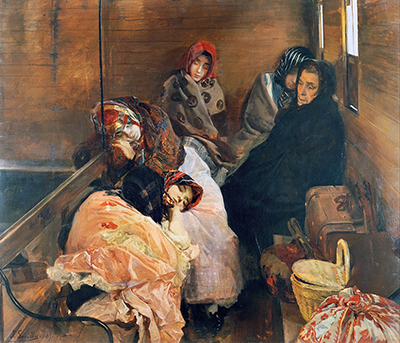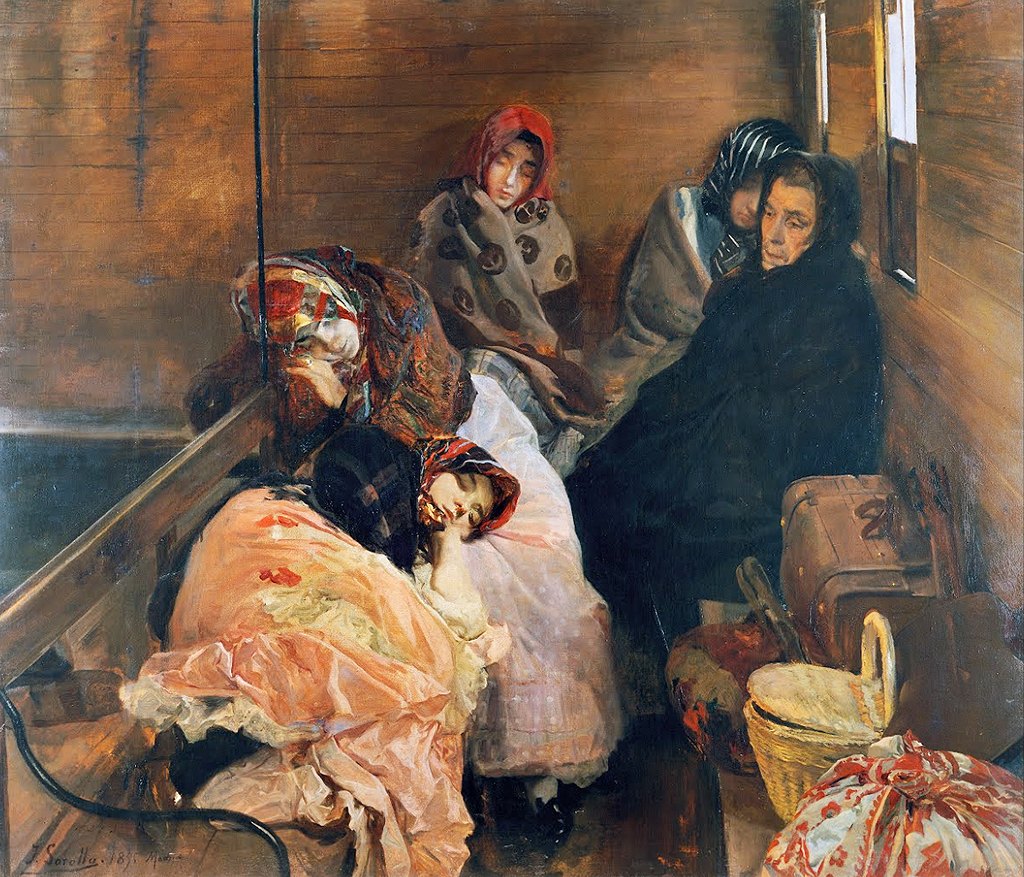This sombre piece dates from 1895 and represents another example of Joaquin Sorolla painting the lives of the poor, which he would do in both positive and negative ways across his career.
Within this scene we find five women of varying ages huddled around in a small room, seemingly waiting to travel. They are dressed in thick clothing suggesting that temperatures are low and that they maybe outdoors for some time. They are all joined by a number of bags and baskets, as well as a guitar. A study of Sorolla's career reveals that he was particularly interested in social realism in the last decade of the 19th century and would produce a number of artworks related to this one. It seems that Sorolla realised that paintings such as White Slave Trade could prove popular within European salons, thus promoting his own reputation but he also genuinely enjoyed working within this genre and was motivated by the opportunity to draw attention to the lives of the poor. The room in which these women sit is deliberately bare, underlining their harsh lives.
The elderly woman found on the right hand side is believed to be the procuress who essentially helps protect the younger women who work as prostitutes. They are actually not so much in a room, but a railway carriage, hence the travel items that they have with them. The title of White Slave Trade then becomes clear, as we are discussing the lives of women who work in a desperate and unfortunate situation. The overall piece is sensitively done, taking the side of these women rather than judging them negatively as most of society would certainly have done at the time, and perhaps still would do today. Social realism would become a popular artistic genre within Europe from before the time of Sorolla, particularly so in France. This was a change from previous times, when only the rich and famous would be considered worthy of appearing in oils.
This painting is now to be found at the Sorolla Museum in Madrid, where you will find an excellent selection of his work. The Prado Museum of the same city also possesses a good array of paintings from his career as well, making this city the ideal spot to learn more about this famous Spanish artist. Additionally, the artist himself studied the great masters at the Prado himself, making this institution a key part of his development, and now he is considered good enough to have his own work displayed there as well. There are countless examples of similar happening at other institutions, including the Louvre in Paris where a number of masters spent their early years studying artists from previous centuries before then later having their own work displayed alongside once they achieved the peak levels of the time.





